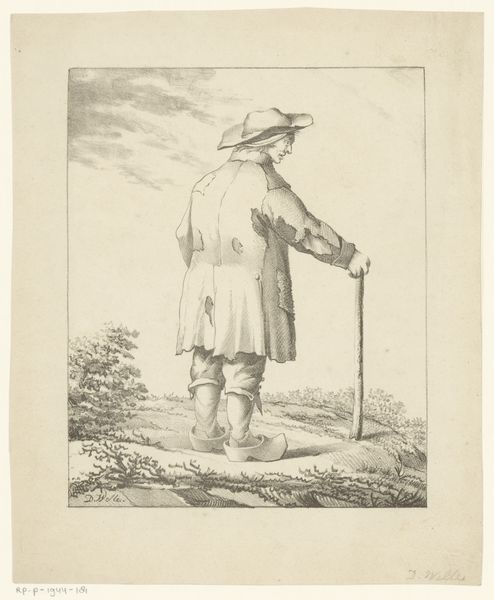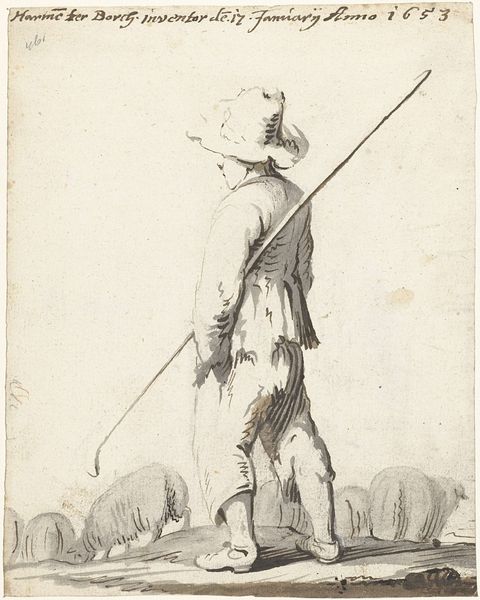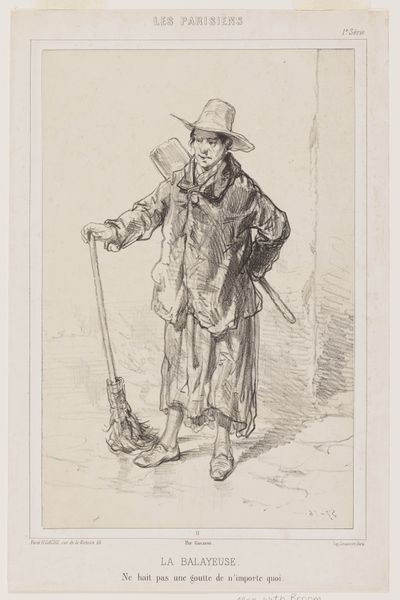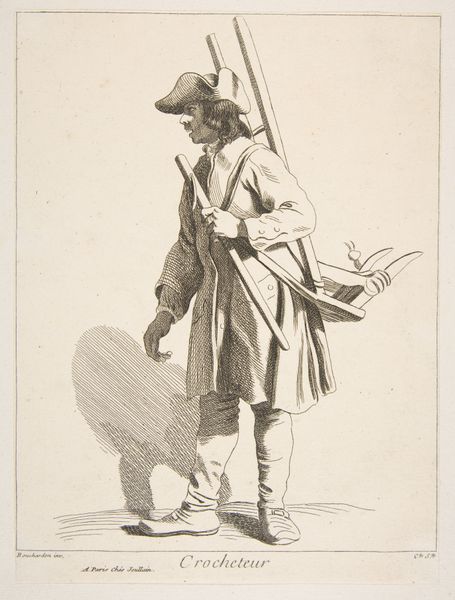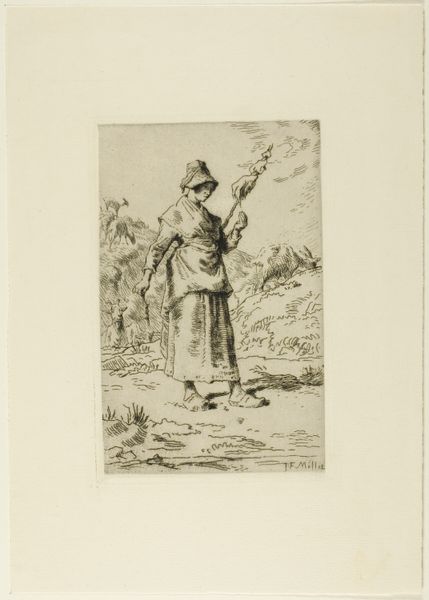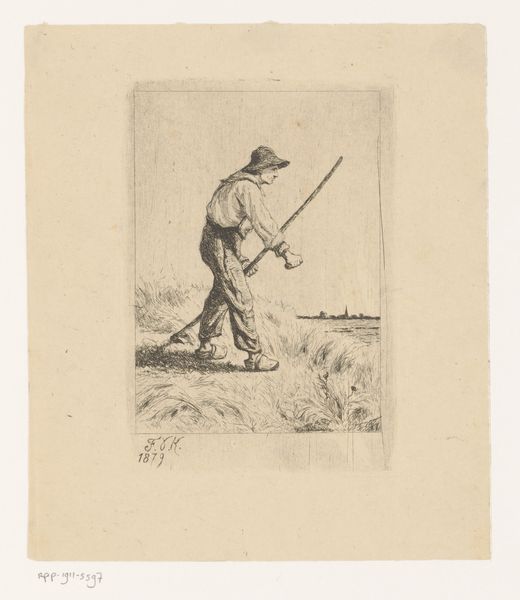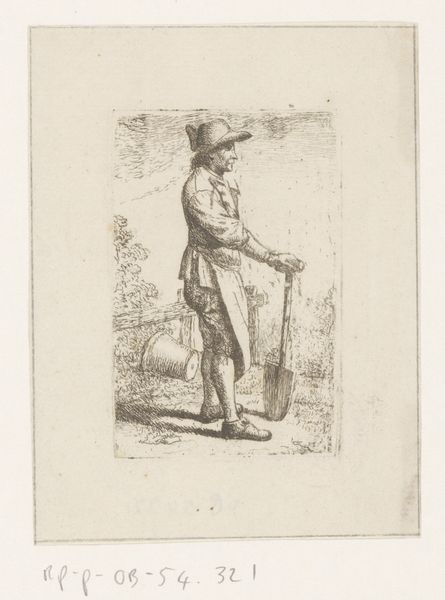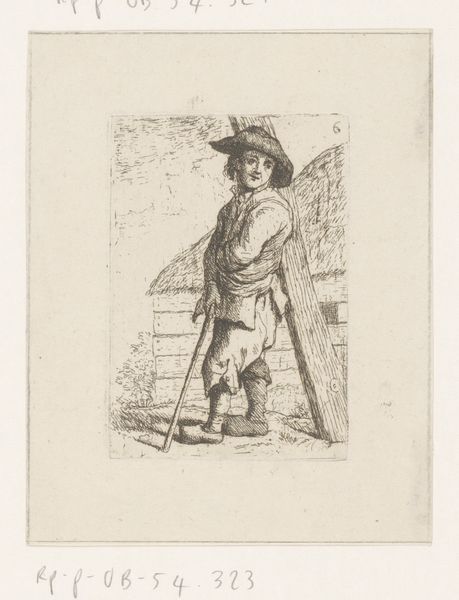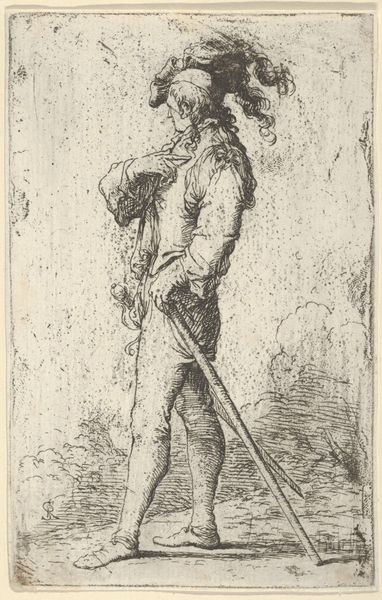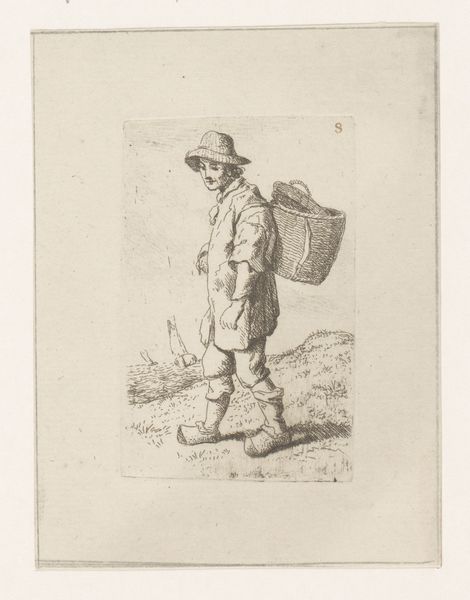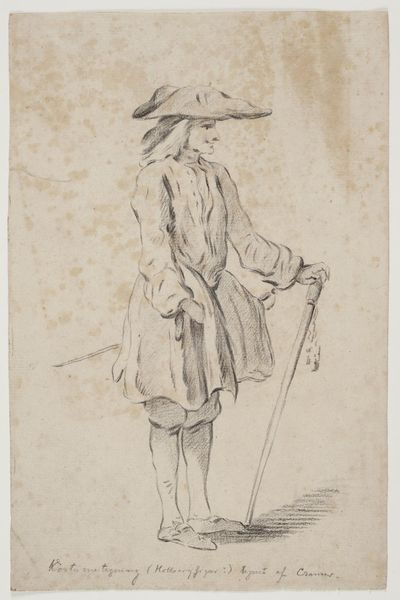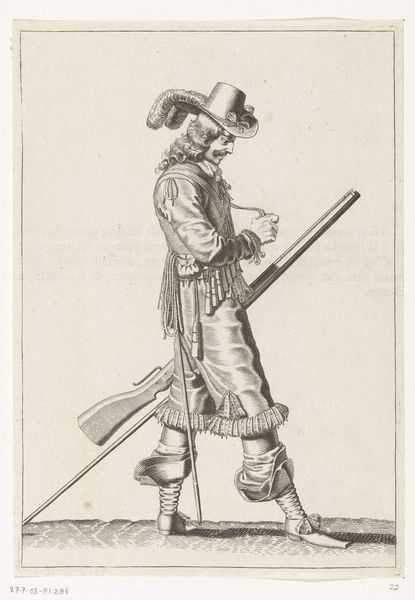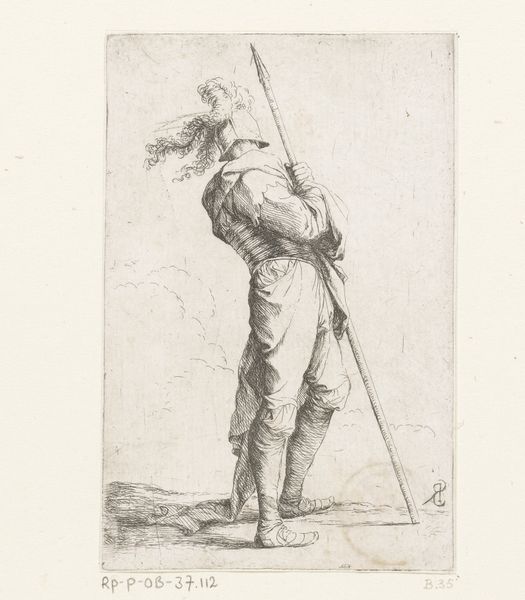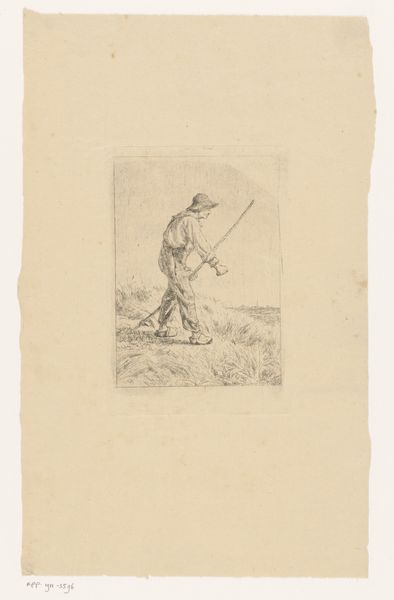
Dimensions: height 165 mm, width 115 mm
Copyright: Rijks Museum: Open Domain
Curator: Here we have “Young seller of bakery products in a landscape” by Claude Henri Watelet, created sometime between 1728 and 1786. Editor: It feels so immediate, almost like a candid snapshot. The pencil lines are delicate but purposeful, really highlighting the young vendor. Curator: Watelet, as an influential figure in the French Enlightenment, was deeply concerned with the role of art in society. Here, we see a romanticized portrayal of the working class, fitting into a broader trend of idealized peasant life. The landscape serves almost as a stage. Editor: The vendor's carrying a woven basket of wares—what looks to be rolls and bagels, perhaps—that detail tells a story. You can imagine the labor involved in crafting these baked goods, the materials used, even the young man’s journey selling them. Curator: Precisely! And while the scene has a rustic charm, one should consider who the likely audience would have been. The image caters to a wealthy patron’s sense of pastoral fantasy. It is a highly curated vision of everyday labor. Editor: I agree that there's this curated perspective. Look how his feet are bare. We should really examine his bare feet. It directs attention not just to the scene's picturesque qualities but, subtly, to his poverty as well. It’s all tied to class, isn't it? Who is baking, selling, and consuming here, and why? Curator: Absolutely, and don't overlook the pencil sketch medium itself. Its accessibility allowed for wider dissemination of such images. This in turn helped solidify idealized and sentimental images of rural life within popular visual culture. Editor: The whole composition, from the hand-made bread to the lightly rendered landscape, encourages us to reflect on both the vendor’s specific labor, as well as all forms of pre-industrial production and consumption. Curator: It’s a potent example of how artists engaged with—and also shaped—perceptions of labor and class. Thanks for pointing that out. Editor: It’s amazing how much complexity can be found in the simplest drawings when you dig a bit!
Comments
No comments
Be the first to comment and join the conversation on the ultimate creative platform.
